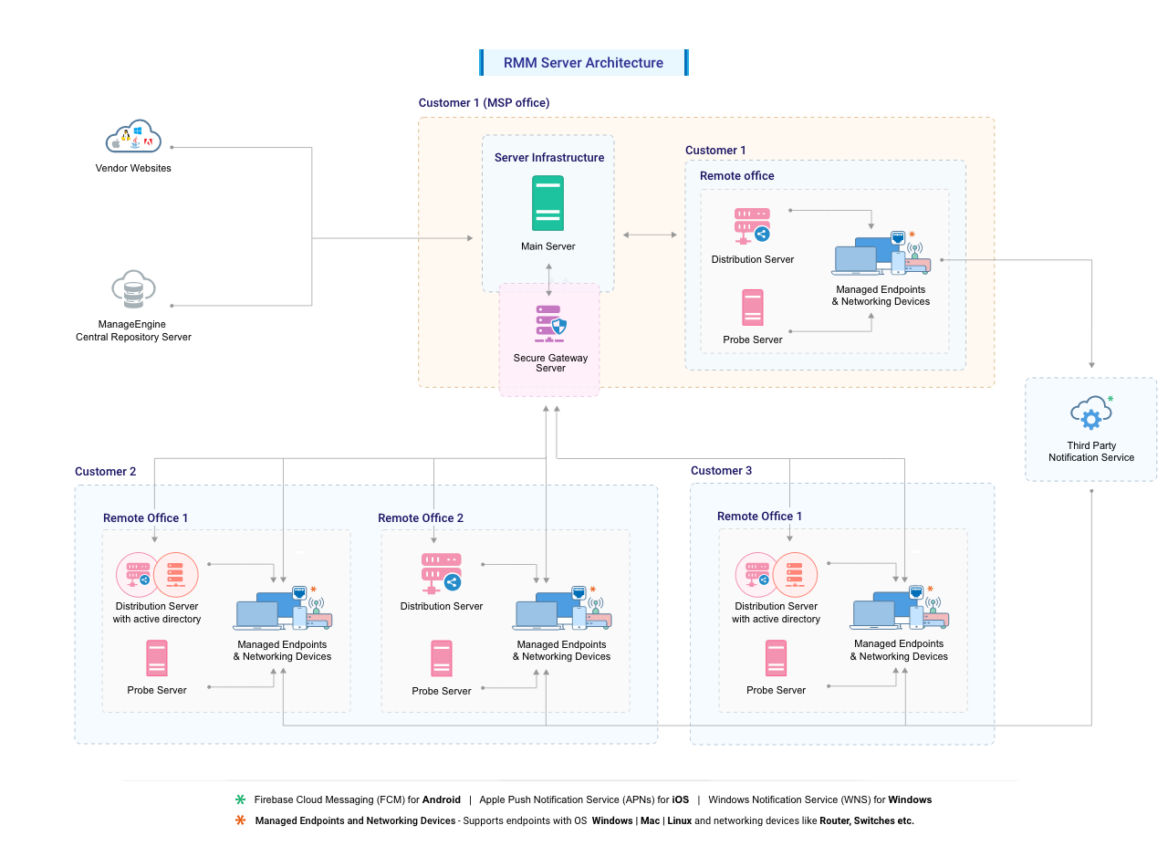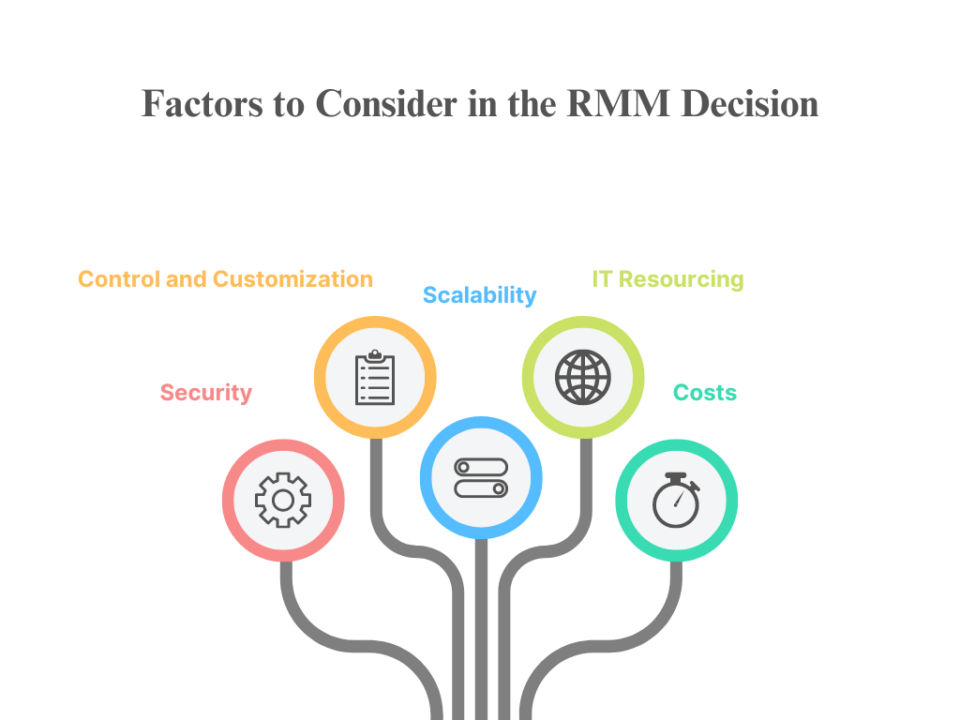RMM in Retail sets the stage for a transformative journey within the retail sector, where efficiency meets technological innovation. As retailers increasingly seek to optimize their operations, Remote Monitoring and Management (RMM) systems emerge as indispensable tools. By seamlessly integrating various functionalities, RMM not only enhances operational efficiency but also offers retailers insights that drive informed decision-making. This narrative explores the core components of RMM, its benefits, and the crucial role it plays in modern retail.
Understanding RMM involves grasping its significance and practical applications in retail environments. These systems facilitate real-time monitoring of retail operations, streamline processes, and enhance customer experiences. By leveraging RMM solutions, retailers can proactively manage their resources, reduce downtime, and ultimately increase profitability. As we delve deeper, we will uncover the tools, best practices, and future trends that are shaping the landscape of RMM in the retail industry.
Understanding RMM in Retail

Retail Management Metrics (RMM) plays a pivotal role in the retail sector, serving as a comprehensive framework that enables retailers to optimize their operations by analyzing key performance indicators (KPIs). In an increasingly competitive landscape, understanding RMM is essential for retailers looking to enhance profitability, improve customer experiences, and streamline operational processes. By leveraging data-driven insights, RMM empowers retailers to make informed decisions that align with their strategic goals.RMM systems function by collecting and analyzing data from various aspects of retail operations, including sales performance, inventory management, customer behavior, and supply chain logistics.
These systems encompass several key components that work in tandem to provide a holistic view of a retailer’s performance. This includes data collection tools, analytical software, and reporting mechanisms that help retailers track their KPIs effectively.
Key Components of RMM Systems
The efficient functioning of RMM systems relies on several essential components, each contributing to the overall effectiveness of retail operations. Understanding these components is crucial for any retailer looking to implement RMM effectively.
- Data Collection Tools: These tools gather data from various sources, including point-of-sale systems, customer feedback, and inventory tracking systems. The accuracy and timeliness of data collection are critical to the success of RMM.
- Analytical Software: This software processes the collected data to identify trends, patterns, and anomalies. Advanced analytics help retailers turn raw data into actionable insights that drive decision-making.
- Reporting Mechanisms: Reporting tools provide visual representations of data, such as dashboards and scorecards, enabling retailers to monitor their performance at a glance. These reports facilitate quick assessments of KPIs and help in strategizing for improvement.
- Benchmarking Tools: Retailers can use benchmarking tools to compare their performance against industry standards or competitors. This helps identify areas for growth and improve competitive positioning.
Benefits of Implementing RMM in Retail Operations
Implementing RMM within retail operations offers a multitude of benefits that can significantly enhance both operational efficiency and customer satisfaction. Retailers adopting RMM can expect to see improvements across various dimensions of their business.
Tracking assets is crucial for any organization, and implementing effective solutions like Track Assets via RMM can streamline this process. With Remote Monitoring and Management (RMM) tools, businesses can gain visibility into their assets, ensuring better management and utilization.
- Informed Decision-Making: By utilizing data analytics, retailers can make decisions based on concrete evidence rather than intuition. This leads to more strategic planning and execution.
- Improved Inventory Management: RMM systems allow for real-time inventory tracking, reducing overstock and stockouts. This ensures that products are available when customers want them, enhancing customer satisfaction.
- Enhanced Customer Insights: Understanding customer preferences and behaviors through RMM enables retailers to tailor their offerings, resulting in better-targeted marketing strategies and increased sales.
- Operational Efficiency: Streamlined processes through RMM lead to reduced operational costs and improved resource allocation, allowing retailers to focus on core business activities.
“Retail Management Metrics not only measures performance but also provides actionable insights that can transform retail operations.”
Through the implementation of RMM systems, retailers can leverage these advantages to stay competitive, respond to market changes effectively, and ultimately drive their business towards greater success.
Another significant advantage of RMM tools is the ability to receive Real-Time RMM Alerts. These alerts enable IT teams to swiftly respond to issues as they arise, minimizing downtime and enhancing operational efficiency while keeping systems secure.
RMM Tools and Technologies

Retail businesses continuously seek ways to enhance operational efficiency and customer engagement, and Remote Monitoring and Management (RMM) tools are at the forefront of this evolution. These technologies enable retailers to manage their IT assets, streamline processes, and improve service delivery from anywhere, thus significantly boosting productivity.RMM tools come equipped with various functionalities tailored to the unique challenges faced by retail operations.
From monitoring network performance to managing endpoints and automating routine tasks, RMM solutions provide comprehensive support that is essential for modern retailers.
Popular RMM Tools in Retail
Several RMM tools stand out in the retail sector due to their robust features and reliability. Understanding these tools and their functionalities can help retail businesses make informed choices.
- SolarWinds RMM: This tool offers cross-platform support, real-time monitoring, and comprehensive reporting features. SolarWinds is particularly praised for its intuitive user interface and powerful automation capabilities, allowing retailers to streamline IT management effortlessly.
- ConnectWise Automate: Known for its scalability, ConnectWise provides extensive remote support features, including patch management and automation tools designed for efficiency. This tool is ideal for businesses looking to manage multiple locations seamlessly.
- Datto RMM: This solution is highly regarded for its disaster recovery capabilities. Datto RMM ensures that retail operations remain robust and resilient, even in the event of data loss, making it a critical asset for businesses that prioritize uptime.
- N-able RMM: N-able offers a user-friendly platform with features such as remote access, monitoring, and backup solutions. Its strong security posture is beneficial for retail businesses handling sensitive customer data.
Comparison of RMM Technologies
When selecting an RMM tool, it’s crucial to understand how different technologies compare in terms of functionality and effectiveness. Each tool has its strengths and weaknesses, making it essential for retailers to align their choice with specific operational needs.
| Tool | Key Features | Best For |
|---|---|---|
| SolarWinds RMM | Real-time monitoring, automated patch management, reporting | Small to medium-sized businesses needing comprehensive monitoring |
| ConnectWise Automate | Scalability, remote support, extensive automation | Businesses with multiple locations or complex IT needs |
| Datto RMM | Disaster recovery, backup solutions | Retailers prioritizing data resilience |
| N-able RMM | User-friendly interface, security features | Retailers managing sensitive data |
Integration of RMM Solutions with Existing Retail Systems
The integration of RMM solutions with existing retail systems is fundamental for maximizing operational efficiency. Retailers need systems that work in harmony with their current technologies to ensure a seamless flow of information and processes. Integrating RMM tools can involve connecting them with point-of-sale (POS) systems, inventory management software, and customer relationship management (CRM) platforms. Such integrations enhance data visibility across various channels, allowing retailers to make data-driven decisions more effectively.
“Successful integration of RMM solutions can lead to improved customer experiences by enabling real-time insights into inventory levels and customer preferences.”
As retail businesses evolve, leveraging RMM technologies becomes indispensable for maintaining a competitive edge. These tools not only optimize operational capabilities but also support the overall goal of delivering exceptional customer service.
Best Practices for Implementing RMM

Implementing Remote Monitoring and Management (RMM) solutions in retail can significantly enhance operational efficiency and customer satisfaction. However, the process requires careful planning and execution to avoid common pitfalls. This section Artikels best practices that retailers should follow to successfully implement RMM solutions, emphasizing systematic approaches, anticipated challenges, and essential training.
Step-by-Step Guide for RMM Implementation
To ensure a successful RMM implementation, retailers can follow this structured step-by-step guide. Each step is designed to lay a solid foundation for RMM integration, minimizing disruptions while maximizing benefits.
- Assessment of Needs: Conduct a thorough analysis of current operational challenges and technological gaps. Identify specific areas where RMM can provide value, such as inventory management, customer engagement, or system monitoring.
- Selection of RMM Tools: Based on the needs assessment, research and choose the RMM tools that best fit the operational requirements. Consider factors such as scalability, ease of integration, and user-friendliness.
- Developing a Strategy: Create a comprehensive strategy that Artikels the objectives of RMM implementation, the timeline, and the required resources. Include stakeholder engagement to ensure alignment across departments.
- Integration Planning: Plan for the technical integration of RMM tools with existing systems. This phase includes ensuring compatibility with current software and hardware infrastructures.
- Testing: Before full deployment, conduct a pilot test of the RMM solutions in a controlled environment. This will help identify potential issues and allow for adjustments before a wider rollout.
- Full Deployment: After successful testing, proceed with the full deployment of RMM tools. Ensure that the rollout is systematically managed to prevent any disruptions to daily operations.
- Continuous Monitoring and Optimization: After implementation, continuously monitor the performance of RMM solutions. Gather feedback and data to optimize their use and address any emerging challenges.
Challenges During RMM Implementation
Despite the advantages, retailers may encounter several challenges during RMM implementation. Identifying these challenges ahead of time can lead to effective strategies for overcoming them.One common challenge is resistance to change from staff, which can hinder the adoption of new technology. To address this, engaging staff early in the process and communicating the benefits of RMM solutions can mitigate resistance.
Another challenge is the integration of RMM tools with existing systems. Retailers often struggle with compatibility issues, which can delay implementation. To overcome this, involving IT specialists during the selection and planning stages ensures that all systems can work together seamlessly.
Effective communication and transparent processes are key to overcoming challenges during RMM implementation.
Training and Support for Staff, RMM in Retail
For RMM tools to be effectively utilized, comprehensive training and ongoing support for staff are crucial. A well-trained workforce can leverage RMM solutions to their full potential, leading to improved operational outcomes.Training programs should include the following components:
- Product Training: Provide detailed training on how to use the specific RMM tools chosen. This training should cover features, functionalities, and best practices.
- Process Training: Ensure staff understand how RMM tools fit into existing workflows. Highlight how these tools can enhance their daily tasks and improve efficiency.
- Ongoing Support: Establish a support system for employees to seek help as needed. This might include a dedicated help desk, regular Q&A sessions, or access to a knowledge base.
- Feedback Mechanisms: Implement channels for staff to provide feedback on the RMM tools. This helps identify areas where additional training may be required and fosters a culture of continuous improvement.
By focusing on these best practices, retailers can achieve a smooth and successful RMM implementation that enhances their operational capabilities and customer engagement.
Future Trends in RMM for Retail: RMM In Retail
The retail landscape is undergoing a transformative shift driven by advancements in Remote Monitoring and Management (RMM) technology. As retailers increasingly adopt these solutions, emerging trends are poised to redefine operational efficiencies, customer engagement, and data analytics. Understanding these trends is crucial for retailers looking to maintain a competitive edge in an evolving marketplace.One of the most significant trends in RMM for retail is the integration of artificial intelligence (AI) and machine learning (ML) into RMM systems.
These technologies are not only enhancing the capabilities of RMM tools but are also facilitating smarter decision-making processes. Retailers are leveraging AI-driven analytics to predict customer behaviors, optimize inventory management, and streamline supply chain operations. This shift towards intelligent RMM solutions enables businesses to respond more dynamically to market changes and consumer needs.
Impact of Artificial Intelligence and Machine Learning on RMM Systems
The incorporation of AI and ML into RMM systems is revolutionizing how retailers manage their operations. These technologies allow for advanced data analysis and automation, which can lead to significant improvements in efficiency and effectiveness. Retailers can harness AI algorithms to:
- Enhance Customer Insights: AI enables retailers to analyze vast amounts of customer data, identifying trends and preferences that inform marketing strategies and product offerings.
- Automate Routine Tasks: Machine learning algorithms can automate monitoring tasks, freeing up human resources for more complex and creative endeavors, such as customer service and strategic planning.
- Predictive Maintenance: With AI, RMM systems can forecast equipment failures before they occur, allowing for proactive maintenance that minimizes downtime and enhances operational efficiency.
- Dynamic Inventory Management: AI-driven insights help retailers manage stock levels more effectively, adjusting inventory in real-time based on demand forecasts and sales patterns.
The implementation of these technologies presents a significant opportunity for retailers. For instance, companies like Walmart are already utilizing AI in their supply chain processes, optimizing product deliveries based on predictive analytics, resulting in reduced costs and improved customer satisfaction.
Predictions on the Evolution of RMM in Retail
Looking ahead, the evolution of RMM in retail is expected to accelerate, with several key trends anticipated to shape its future. Retailers can expect to see enhancements in RMM technologies that will further streamline operations and elevate consumer experiences. The following projections Artikel potential advancements over the next five years:
- Increased Integration with IoT: The Internet of Things (IoT) will play a significant role, as more retail equipment becomes interconnected. RMM systems will integrate seamlessly with IoT devices, allowing for real-time monitoring and management.
- Greater Personalization: As RMM systems harness more robust data analytics, retailers will be able to deliver highly personalized shopping experiences, tailoring promotions and product recommendations based on individual preferences.
- Focus on Cybersecurity: With the growing dependence on digital systems, retailers will increasingly prioritize cybersecurity within their RMM frameworks, safeguarding customer data and maintaining trust.
- Expansion of Cloud-Based Solutions: Cloud technology will continue to expand, allowing retailers to access RMM tools from anywhere, improving flexibility and collaboration among teams.
These projected trends underscore the importance of adopting innovative technologies to stay competitive in the retail sector. Retailers who embrace these changes will likely experience improved operational efficiency, enhanced customer engagement, and greater overall success in the marketplace. As these advancements unfold, the retail industry is set to emerge more resilient and adaptable than ever before.